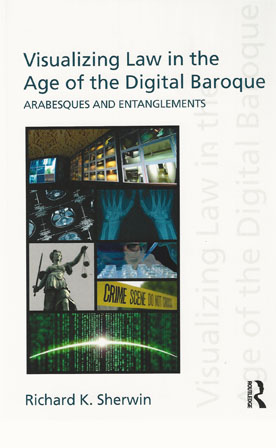We are now closed for the Christmas and New Year period, returning on Monday 5th January 2026. Orders placed during this time will be processed upon our return on 5th January.

Visualizing Law in the Age of the Digital Baroque explores the profound impact that visual digital technologies are having on the practice, theory, and teaching of law.
Today, lawyers, judges, and lay jurors face a vast array of visual evidence and visual argument. From videos documenting injuries, crimes, and accidents, to computer displays of their digital simulation, increasingly, the search for fact-based justice inside the courtroom is becoming an offshoot of visual 'meaning- making'. But when law migrates to the screen it lives there as other images do, motivating belief and judgment on the basis of visual delight and unconscious fantasies and desires as well as actualities.
Law as image also reflects current cultural anxieties concerning not only the truth of the image, but also the mimetic capacity itself, the human ability to represent reality. What is real, and what is simulation? This is the hallmark of the baroque, when dreams fold into dreams, like an all too vivid video game or immersion in a seemingly endless matrix of digital appearances. As the reality of fact-based justice recedes, laws proliferate within a field of uncertainty and longing.
Left unchecked, this condition of ontological and ethical uneasiness threatens the legitimacy of law's claim to power. To meet this crisis, Visualizing Law in the Age of the Digital Baroque offers both a cultural diagnostic, identifying the contemporary cultural conditions in which law lives as a digital image on the screen, and a normative response, arguing for an affirmative, post-positivist jurisprudential paradigm that is adequate to the challenge these conditions present.